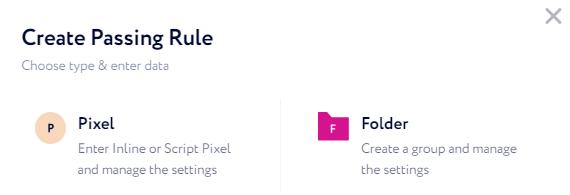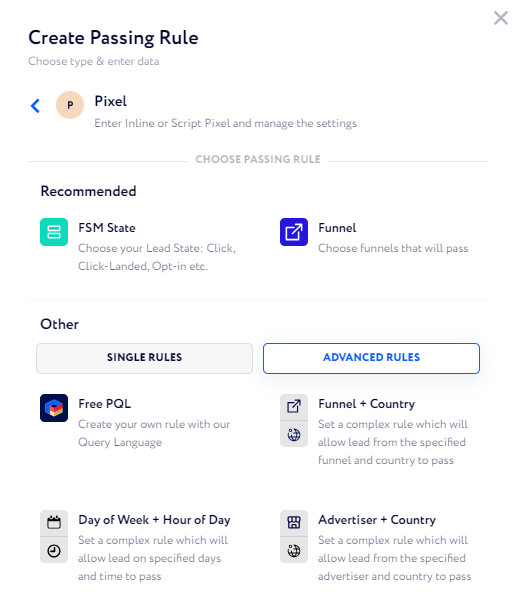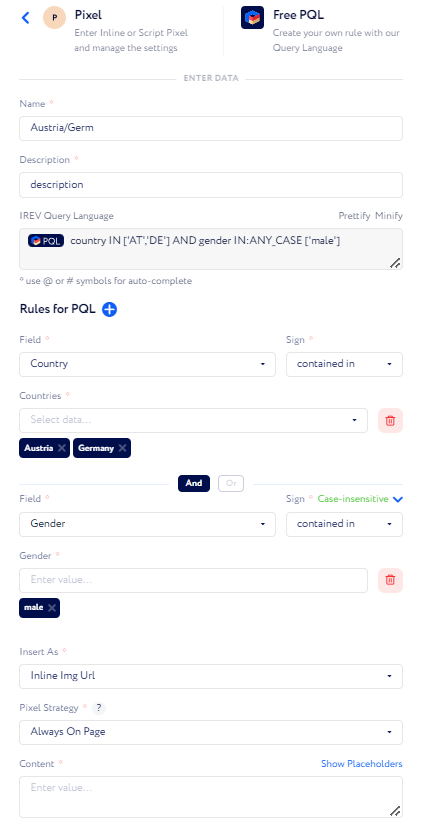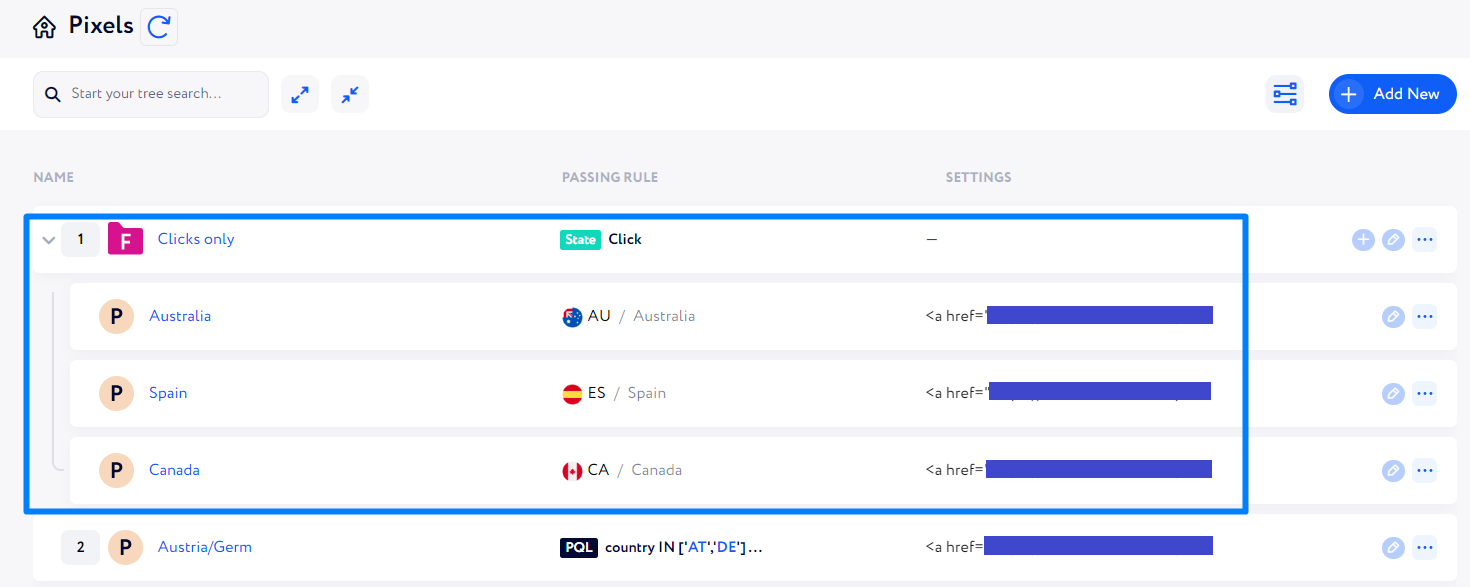How to create a pixel?
In this article you can learn how to set up rules to sort the data and send only the necessary information using pixels.
Note: As the procedure includes a lot of peculiarities and important details, we recommend going through this article to take in the process completely.
Important: All the rules in the Pixels list have their priority from top to bottom. The higher the rule, the higher its priority is. To change a rule priority, drag it up or down in the list.
So, let us describe how to create a rule step by step.
Go to Landings → Pixels and click the "Add New" button at the top right corner of the page.
Choose an element you would like to create in the appeared window.
There are two element types to choose from:
Pixel – entity which contains rules for one Pixel only (simple option).
Folder – general folder which contains rules for any number of Pixels. The rule you set for this folder will be applied for all the entities inside it (advanced option).
Creating a simple pixel rule
The Pixel element may be useful when you need to create a rule for only one particular pixel.
To create a Pixel and set rules for lead action filtering, perform the following steps:
Select "Pixel" in Step 2 above.
Create a rule and define criteria considering which lead action data will be sent to an affiliate.
You are required to choose one option out of the "Recommended" or "Other" sections.
Recommended:
FSM State – select a lead action according to its lead flow (click, click-landed, pushed lead, etc.) to be sent to the affiliate's tracking system and set up pixel parameters.
Funnel – specify funnel(s) from which a lead action to be sent to the affiliate's tracking system and set up pixel parameters.
Other:
Single Rules:
Day of Week – day(s) of the week during which lead action is sent to the affiliate’s tracking system.
Here, you can also choose a timezone considering which traffic is filtered. By default, your CRM timezone is set.Country – country/countries from which a lead action to be sent to the affiliate’s tracking system.
Affiliate – affiliate(s) from which a lead action to be sent.
Hour of Day – time period during the day in which a lead state is sent to the affiliate’s tracking system.
Here, you can also choose a timezone considering which traffic is filtered. By default, your CRM timezone is set.Advertiser – advertiser(s) from which a lead action to be sent.
Offer – advertiser platform and offer(s) from which a lead action to be sent.
Advanced Rules
Here, combinations of single rules are introduced. However, there is one advanced rule that needs explaining.
Free PQL – this option allows you to create more detailed and precise rules for lead action filtering (i.e., you can specify ways of filtering here).
If you need to add your own filter, add it to Lead Profile first and then include it into the lead form.
Example: If you need to only transmit a lead action from Germany and Austria as well as all leads to be of male gender, rules for PQL will look like in the screenshot below.
Regardless of the rule you choose, you need to fill in the following fields:
Type – select the way your tracking pixel will be incorporated.
Pixel Strategy – select the way the pixel will be displayed on the funnel.
Always On Page – pixel will be constantly shown on the page even if the page is reloaded (good for basic tracking scripts).
Show Once – pixel will only be shown once and will not reappear if the page is reloaded (good for goal tracking).
Content – put the pixel URL here.
You can also incorporate some tracking parameters which a lead will be assigned to if it clicks the pixel. You can find these parameters once clicking "Show Placeholders".
Once you click the "Submit" button, the rule with the name you set appears in the Pixels list.
There is an option to study all the rule logs. To do so, click the button as it is shown in the screenshot below.
Then, choose logs for what date you wish to look at and click the "Logs" button in the "Argument" column of the corresponding line. Then, you will see clear and precise information on a particular action as shown below:
Creating an advanced pixel rule
The "Folder" element is a regular folder where you can add another Folder or a Pixel.
You can use it when you need to arrange transmitted lead actions by some criteria or for setting more complex rules.
To create a Folder and set rules for lead action filtering, perform the following steps:
Select Folder in Step 2 above.
Create a rule and define criteria considering which lead action data will be sent to an affiliate. Here, rules are the same as for the Pixel node. A newly-created folder looks like this:
To add subelements inside this folder, click + at the right of this line and set up rules as needed.
Thus, an example of the folder targeted to the Click lead state with three different Pixel URLs for three different countries is shown in the screenshot below.
Note: If a node or a whole folder needs to be deleted, you should deactivate it first and then, click ⨯ appeared on the right of the corresponding line.










